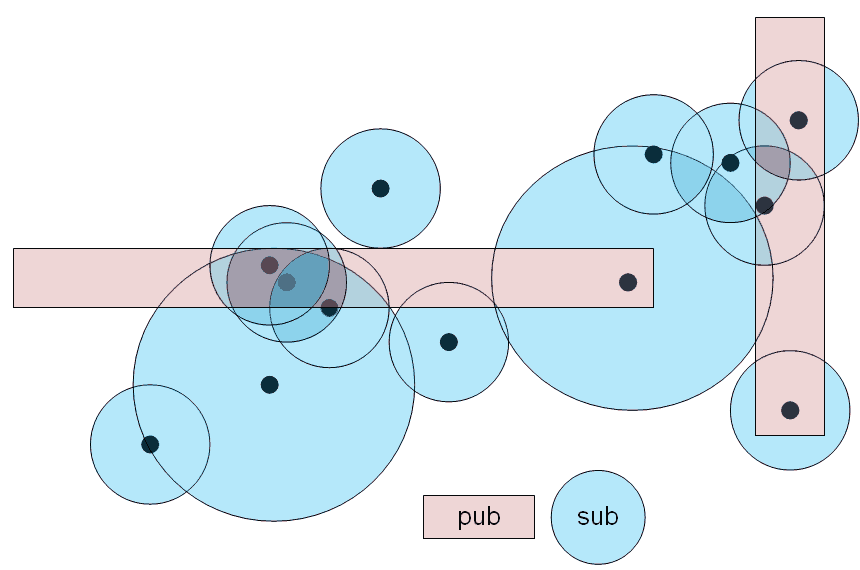|
Overview Demo Downloads
Documentation
Contributors
|
Existing virtual worlds rely on static resource provisioning and partitioning that are expensive to deploy and have inherent scalability limits. VAST intends to provide an open source alternative that is scalable, affordable, and easily deployable. VAST will have these properties due to a peer-to-peer (P2P) design, so that resource nodes can be added or removed any time, and dynamic load balancing is possible. VAST relies on a Voronoi-based Overlay Network (VON), which performs neighbor discovery and spatial queries in bounded amount of time (i.e., the query time does not increase as more nodes join the system). Additionally, VAST uses VSO to perform load balancing, and VoroCast to distribute messages via forwarding. VAST is also designed to be an experimentable middleware consisting of three major components: network-layer, protocol and simulator. Each is intended to be as self-contained as possible, and may be developed separately by different parties. This allows new algorithms or simulators be tried and tested for VAST's properties and performance. VAST utilizes existing open source software whenever possible. Specifically, Steven Fortune's sweepline algorithm is currently used for constructing Voronoi diagrams, and ACE is used as the underlying network layer to provide cross-platform extensibility.
VAST is under the GNU's Lesser General Public License (LGPL) and can be downloaded here.
any questions/comments/inquiries? please contact us
|
